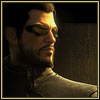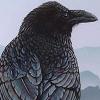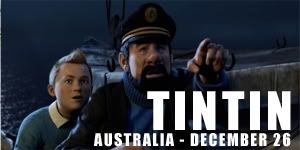Hi guys,
I want to get back into drawing.
I'm sick of books (though I see the point) that show you how to draw the author's version of a man, woman or monster etc. It's good for practice but what I want to draw my own creations. What I'm looking for is a book about how artists take what they see in nature and around them. How they take that inspiration and creatively add to it, then how they transfer this idea to the page in a coherent manner. Step by step would be great. I want to see everything that goes on in between that and results in an amazing, fantastical artwork.
Here's an explicit example of what I mean: I know how to take one animal and another animal and combine them for interesting/funny results but how does the artist go beyond that and prevent the creature looking JUST like a combination of two real world animals/reptiles/insects etc? Does anyone know what I mean? How do they add that generous level of originality?
Sorry, it's hard to describe. I'm sick of buying good (but quite advanced) 'how to' draw books) and not using them because they're either too difficult or don't give me enough information. I'm just not getting anywhere.
Does anyone know of books that cover that sort of thing in depth? (I'm particularly interested in weird fauna and flora).
Thanks guys!
Best title for drawing book on inspiration/imagination & developing ideas?
8 posts •
Page 1 of 1
-

Warrior 4 Jesus - Posts: 4844
- Joined: Tue Sep 07, 2004 10:52 pm
- Location: The driest continent that isn't Antarctica.
-

Ante Bellum - Posts: 1347
- Joined: Tue Apr 07, 2009 2:59 pm
- Location: E U R O B E A T H E L L
If you're speaking specifically about creature creation, the pros are well versed in anatomy. They study the skeletal and muscular structure of existing animals. They examine what's physically possible and impossible, and based on that knowledge, can invent novel creatures which are theoretically functional and would be able to walk or fly or crawl in a given environment.
I don't think you're going to find what you're looking for in a book alone, not even in an anatomy book. There are good ones out there, but unless you also study the real thing in motion, looking at bones and muscles won't help very much. Animators spend a lot of time at zoos, watching and sketching animal because they must understand how animals physically move. They use this to create believable cartoon caricatures, but it's also the sort of knowledge you need to invent entirely new animals.
Really, what you're going to need are large portions of attentive curiosity, determination and patience. You need study both real animals and ones people make up that impress you. Try to perceive what they did--what animals inspired it, what impression it gives (i.e. cumbersome brute, lithe and flitting). Psychology comes into a bit too. What, for example, makes a spider or a bear frightening? How can I incorporate that feeling into my creature design? What about llamas or hedgehogs makes them seem funny? How can I take that and use it for my animal design?
Good luck!
I don't think you're going to find what you're looking for in a book alone, not even in an anatomy book. There are good ones out there, but unless you also study the real thing in motion, looking at bones and muscles won't help very much. Animators spend a lot of time at zoos, watching and sketching animal because they must understand how animals physically move. They use this to create believable cartoon caricatures, but it's also the sort of knowledge you need to invent entirely new animals.
Really, what you're going to need are large portions of attentive curiosity, determination and patience. You need study both real animals and ones people make up that impress you. Try to perceive what they did--what animals inspired it, what impression it gives (i.e. cumbersome brute, lithe and flitting). Psychology comes into a bit too. What, for example, makes a spider or a bear frightening? How can I incorporate that feeling into my creature design? What about llamas or hedgehogs makes them seem funny? How can I take that and use it for my animal design?
Good luck!
-

Esoteric - Posts: 1603
- Joined: Sun Aug 22, 2004 1:12 pm
- Location: The Lost Room.
While I don't have many book titles to offer, I do have some advice.
I used to draw monsters of my own creation all the time. All I read were handbooks on dinosaurs, sea monsters, mythological creatures, etc back in the day. If you want to create creatures, then look at mythological ones as an example. Even if they're outlandish.
Also, experiment and practice a lot. Especially when designing your creation, don't be afraid to add something that looks weird at first, it could add to it positively.
So yeah, some illustrated handbooks like the Dinosaur Minipedia by Jinny Johnson. You can find this pretty cheaply and it's full of illustrations. I'd also recommend watching some BBC documentaries like the Walking With series.
I used to draw monsters of my own creation all the time. All I read were handbooks on dinosaurs, sea monsters, mythological creatures, etc back in the day. If you want to create creatures, then look at mythological ones as an example. Even if they're outlandish.
Also, experiment and practice a lot. Especially when designing your creation, don't be afraid to add something that looks weird at first, it could add to it positively.
So yeah, some illustrated handbooks like the Dinosaur Minipedia by Jinny Johnson. You can find this pretty cheaply and it's full of illustrations. I'd also recommend watching some BBC documentaries like the Walking With series.
-

CrimsonRyu17 - Posts: 859
- Joined: Mon Oct 17, 2005 5:31 pm
Okay, I asked and she said that some books can be found in the psychology section of bookstores. I can't quite remember the names of the books, I think one might have been Studio Drawing or something like that.
-

Ante Bellum - Posts: 1347
- Joined: Tue Apr 07, 2009 2:59 pm
- Location: E U R O B E A T H E L L
Thanks Ante. I'll see if I can find anything under that name.
Esoteric, great advice mate. Yes, I realise I need to improve my anatomy drawing skills. I'll try to be observant and practice hard. Do you know of any quality books for beginners in creature anatomy?
CrimsonRyu, yes, monsters from myth and legend are good resources. I was a big fan of them too, still am to a degree. I've no fear of drawing something weird (I want it to look odd but be plausible in it's practicality.
The reason I asked this question is because I wish to create many odd creatures for my WIP novel. For quite some time now I've wanted to create a new kind of dragon, a hybrid based around the Thorny Devil Lizard and the Sugar Glider (both great Australian animals). I want to take the basic form of the lizard and give it the skin membrane folds like the glider, so it can glide for short distances.
Thorny Devil Lizard:

Sugar Glider:

Esoteric, great advice mate. Yes, I realise I need to improve my anatomy drawing skills. I'll try to be observant and practice hard. Do you know of any quality books for beginners in creature anatomy?
CrimsonRyu, yes, monsters from myth and legend are good resources. I was a big fan of them too, still am to a degree. I've no fear of drawing something weird (I want it to look odd but be plausible in it's practicality.
The reason I asked this question is because I wish to create many odd creatures for my WIP novel. For quite some time now I've wanted to create a new kind of dragon, a hybrid based around the Thorny Devil Lizard and the Sugar Glider (both great Australian animals). I want to take the basic form of the lizard and give it the skin membrane folds like the glider, so it can glide for short distances.
Thorny Devil Lizard:

Sugar Glider:

-

Warrior 4 Jesus - Posts: 4844
- Joined: Tue Sep 07, 2004 10:52 pm
- Location: The driest continent that isn't Antarctica.
Yes... very good idea. Alright, I'd say start out with the drawing of the lizard and just start trying to draw the wings on it (Yes, I know it's not as easy as it sounds.)! The wings are basically flaps of skin attached to the legs of the sugar glider, so try drawing them like that (except, instead of covered with fur, they're covered with scales.)! Then, if you want to draw it gliding, try drawing the shape of the lizard with the legs spread out just like a sugar gliders.
It's a hard thing to do I must say, but it's really fun to try! Just don't wear yourself out trying!
It's a hard thing to do I must say, but it's really fun to try! Just don't wear yourself out trying!

-

Arya Raiin - Posts: 242
- Joined: Tue Aug 04, 2009 10:33 am
- Location: In a galaxy far, far away...
Do you know of any quality books for beginners in creature anatomy?
Not really--drawing animals was never one of my major interests. However, it's good that you have the two animals you want to blend picked out. (That's a freaky lookin' lizard by the way!) It's general skull shape, neck, and robust ribcage remind me of a turtle.
Here is a site which has 3D rotations of the lizard's skeleton.
http://digimorph.org/specimens/Moloch_horridus/whole/
Here is a website showing pictures of sugar glider skeletons.
http://www.sugarglider.com/gliderpedia/index.asp?Skeleton
Notice the differences. The lizard's ribs are wide, its leg bones thick and its neck long. The sugar glider is a feather weight--slender bones, minimal ribs, almost no neck.
You want your creature to be able to fly (glide). A light weight skeleton is crucial to this. Your lizard has to lose its bulky ribs and heavy limbs. So basically, put that lizard on a major diet and watch the skin sag off it! I might suggest narrowing the rib cage and distending the breastbone downward, almost like a bird's:
http://www.biology-resources.com/drawing-bird-skeleton.html
Pushing the rib shape down instead of outward will make room for the skin folds to spread thinly between the legs. A flat tail is usually the means of controlling a glide, so shape yours accordingly. And the lizard neck and head can probably remain without changes.
Any other changes you add, should be considered in terms of the creature's environment and feeding habits. Does it, for example, climb onto tree branches and sit in wait of passing bugs which it snags with a long tongue? It might then need some sort of camouflage to fool predators (or its prey). Or does it lie in wait of rodents scurrying on the ground below? Then maybe it uses long talons or barbs to drop on its prey and bundle it helplessly into its skin folds until it suffocates.
Remember, form is shaped by function.
-

Esoteric - Posts: 1603
- Joined: Sun Aug 22, 2004 1:12 pm
- Location: The Lost Room.
8 posts •
Page 1 of 1
Who is online
Users browsing this forum: No registered users and 365 guests

